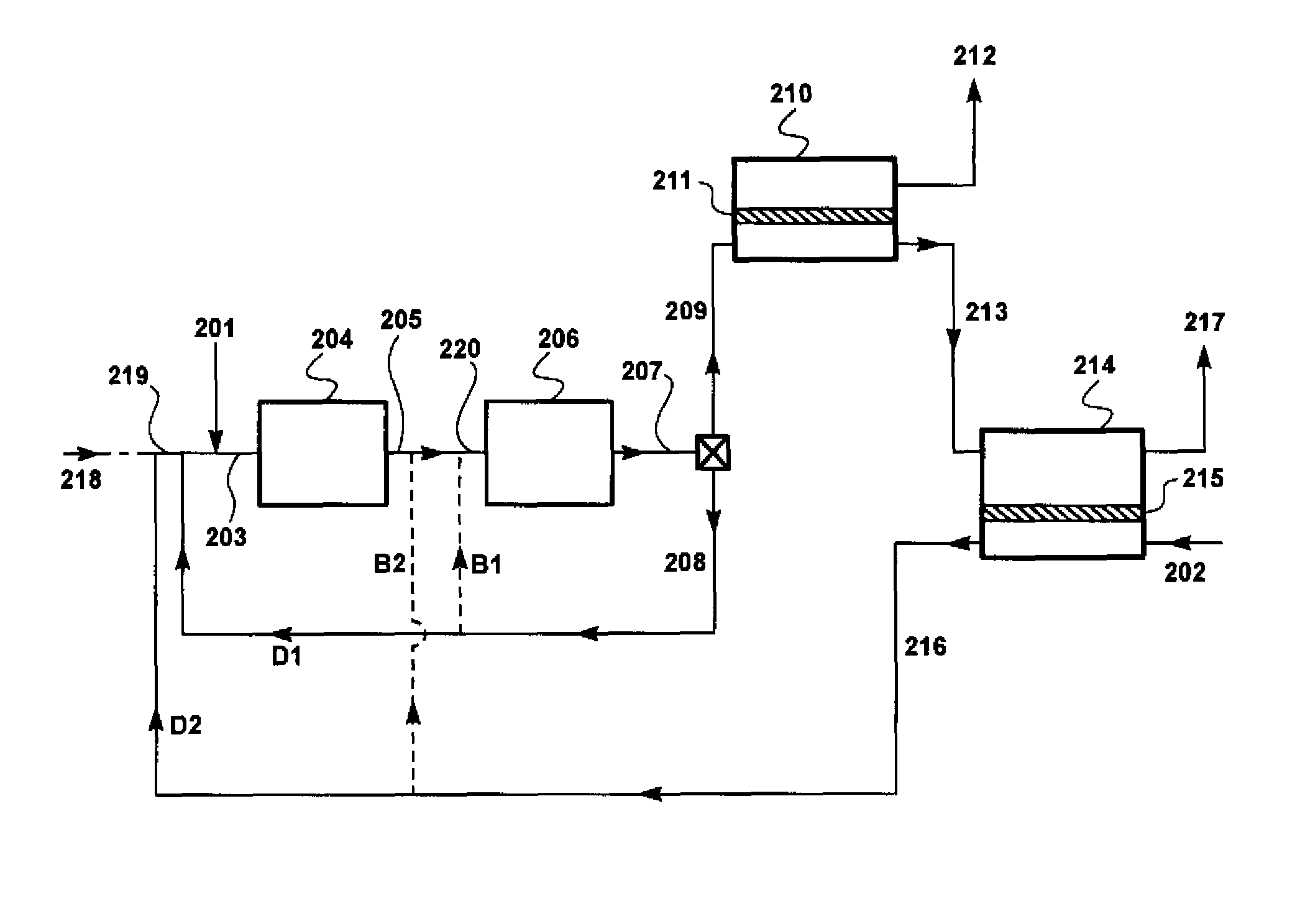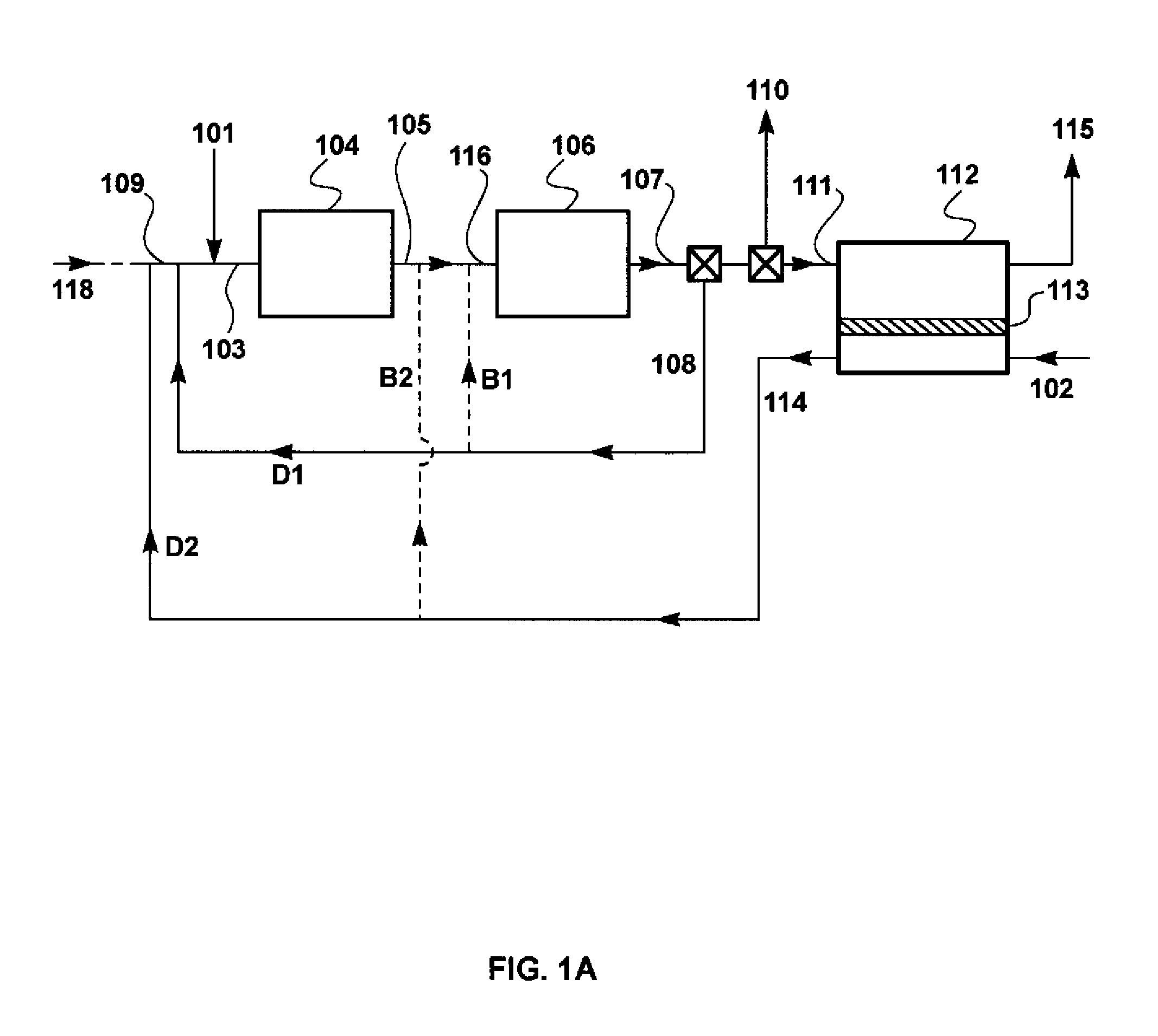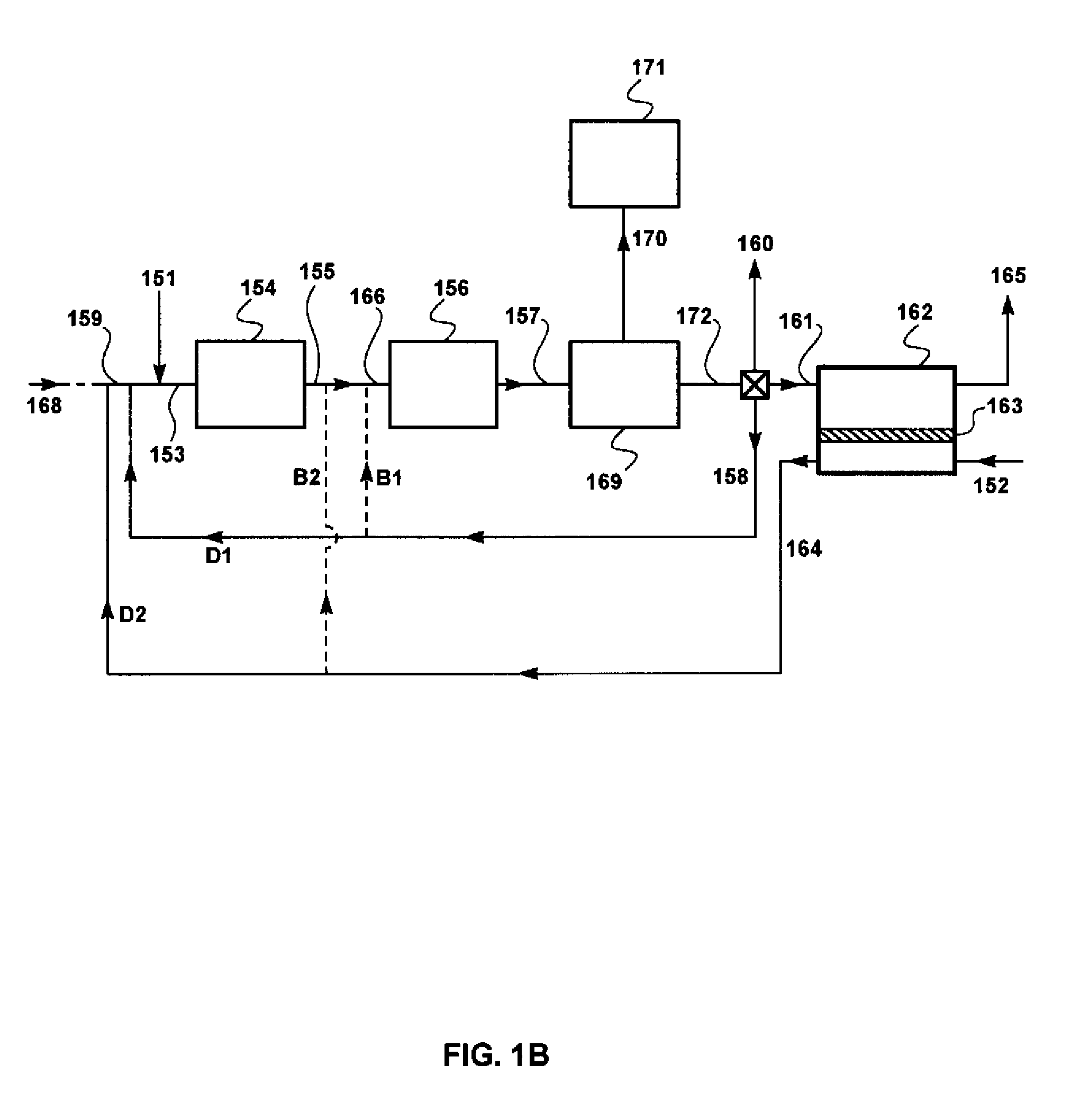Power generation process with partial recycle of carbon dioxide
a technology of carbon dioxide and power generation process, which is applied in the direction of separation process, machine/engine, lighting and heating apparatus, etc., can solve the problems of complex separation of carbon dioxide from this very large dilute stream, huge amount of flue gas generated by power plants, etc., and achieve the effect of reducing the environmental impact of discharging stream and capturing more efficiently
- Summary
- Abstract
- Description
- Claims
- Application Information
AI Technical Summary
Benefits of technology
Problems solved by technology
Method used
Image
Examples
example 1
Bases of Calculations for Other Examples
[0220](a) Membrane permeation experiments: The following calculations were performed using a composite membrane having a polyether-based selective layer with the properties shown in Table 1.
[0221]
TABLE 1GasPermeance (gpu)*CO2 / Gas SelectivityMethane9011Nitrogen3033Oxygen6017Water5,000** —Carbon dioxide1,000 —*Gas permeation unit; 1 gpu = 1 × 10−6 cm3(STP) / cm2 · s · cmHg**Estimated, not measured
[0222](b) Calculation methodology: All calculations were performed using a modeling program, ChemCad 5.6 (ChemStations, Inc., Houston, Tex.), containing code for the membrane operation developed by MTR's engineering group. For the calculations, all compressors and vacuum pumps were assumed to be 75% efficient. In each case, the modeling calculation was performed to achieve the following results:[0223]a concentration of at least about 15 volume % oxygen in the oxygen-containing gas feed to the combustor;[0224]a concentration of at least about 2 volume % o...
example 2
Combustion Process with Partial Flue Gas Recycle and No Sweep-Based Membrane Separation (not in Accordance with the Invention)
[0233]A computer calculation was performed to determine the chemical composition of exhaust gas from a natural gas combustion process, with partial flue gas recycle and no membrane sweep. The process differed from the base-case calculation of Example 1 in that the intake of air was reduced to about half that of Example 1 (in other words, the minimum amount to provide for complete combustion), and the remainder of the gas required for temperature and flow control in the combustor was assumed to be provided by recirculating a portion of the combustion exhaust gas to the combustor inlet, as is commonly done. FIG. 4 is a schematic drawing of a flow scheme for such a combustion process.
[0234]Referring to FIG. 4, natural gas stream 401 and compressed oxygen-containing gas stream 409 are introduced as feed stream 403 into combustion step or zone 404. Stream 409 is m...
example 3
Combustion Process with Membrane Sweep and No Flue Gas Recycle (not in Accordance with the Invention)
[0240]A computer calculation was performed to determine the chemical composition of exhaust gas from a natural gas combustion process, with membrane sweep, but no flue gas recycle. FIG. 5 is a schematic drawing of a flow scheme for such a combustion process.
[0241]Referring to FIG. 5, natural gas stream 501 and compressed combined sweep / permeate stream 512 are introduced as feed stream 503 into combustion step or zone 504. The mass flow rate of the natural gas stream 501 was 71.6 kg / h.
[0242]Combustion exhaust stream 505 is withdrawn, then routed through gas turbine 506 and a condenser (not shown) to knock water out of the stream. The dehydrated turbine exhaust stream 507 is then routed through a splitter, where it is divided into a first portion 508 and a second portion 509. In this example, the first portion 508 and the second portion 509 were in a ratio of 1:5.6 (flow to carbon diox...
PUM
 Login to View More
Login to View More Abstract
Description
Claims
Application Information
 Login to View More
Login to View More - R&D
- Intellectual Property
- Life Sciences
- Materials
- Tech Scout
- Unparalleled Data Quality
- Higher Quality Content
- 60% Fewer Hallucinations
Browse by: Latest US Patents, China's latest patents, Technical Efficacy Thesaurus, Application Domain, Technology Topic, Popular Technical Reports.
© 2025 PatSnap. All rights reserved.Legal|Privacy policy|Modern Slavery Act Transparency Statement|Sitemap|About US| Contact US: help@patsnap.com



